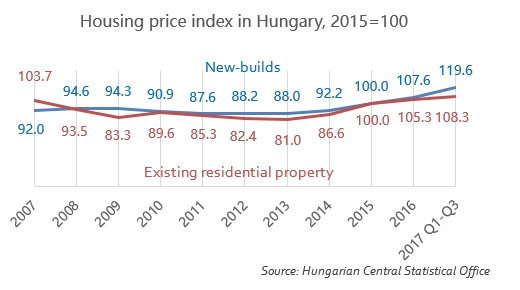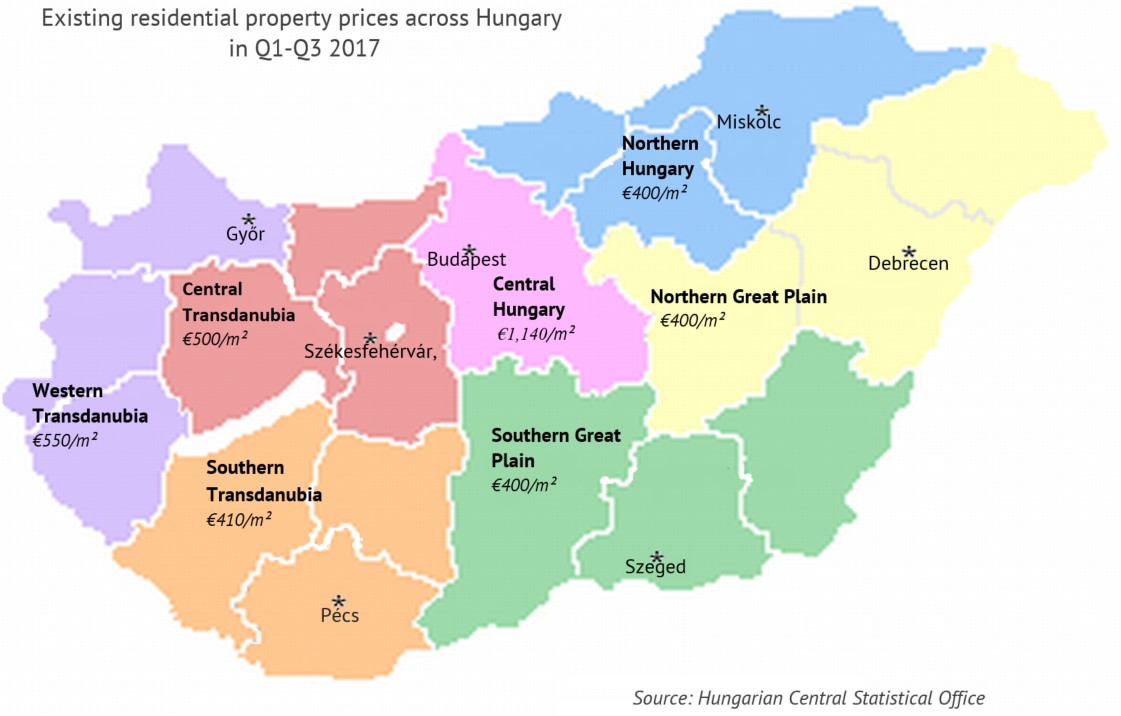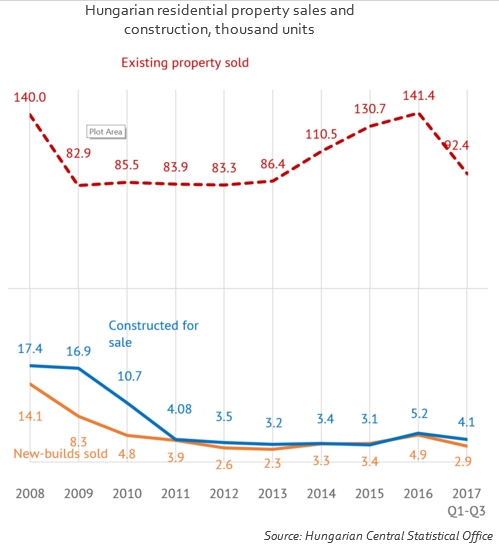Residential real estate in Hungary set to grow

Investors believe that Hungary’s property market is a good investment and expect local residential property prices to continue rising for at least a decade. According to Hungarian media outlet Origo, every fifth property transaction in the country involves foreign buyers, who are mainly from China, Russia and Ukraine.
Growing prices, especially in central districts
The 2008 global economic crisis had a negative effect on Hungarian property prices. According to the Hungarian Central Statistical Office (Központi Statisztikai Hivatal), between 2007 and 2013, when prices bottomed out, prices of existing residential property fell by 22%, while prices of new-builds fell by 4%. However, prices in 2017 have already exceeded pre-crisis levels by 4% among existing properties and by 30% among new-builds.

Property prices vary across Hungary. The country is divided into 19 counties forming seven regions, with Central Hungary being the most expensive, with an average price of €1,140/m². Local property prices grew the most during the first three quarters of 2017 — by 15% from 2016. In the rest of the regions, residential property is twice or thrice cheaper, despite prices increasing by 8–10%.

According to the Hungarian Central Statistical Office, property prices in the administrative centres of Hungary are growing twice faster than in small localities. The price per square metre is growing 25% faster in new builds than in the existing property market.
Residential property prices
across various types of communities in Hungary, Q1–Q3 2017
| New-builds | Existing residential property |
|||
|---|---|---|---|---|
| Price, €/m² | Price increase since 2016, % |
Price, €/m² | Price increase since 2016, % |
|
| Budapest | 1,620 | 10.2 | 1,310 | 13.6 |
| Administrative centres | 1,000 | 15.1 | 650 | 11.5 |
| Other cities | 960 | 7.6 | 460 | 5.1 |
| Villages | 800 | 5.9 | 240 | 2.8 |
| Nationwide average |
1,160 | 11.1 | 660 | 8.4 |
Construction and sales volume recovery
The crisis affected the construction sector more severely. According to the Hungarian Central Statistical Office, in 2008, about 17,400 residential facilities were built, compared to 3,100 in 2015. Construction volumes began recovering as late as in 2016. According to the latest data, during the first three quarters of 2017, 4,100 newly built residential facilities were listed for sale.

The volume of sales for existing property in Hungary is dozens of times more than for new-builds. During the first three quarters of 2017 92,400 residential facilities were sold in the existing property market, compared to 2,900 new-build. Over the past decade, more new-builds have been entering the Hungarian property market than have been sold, except for 2015, when 3,100 units were built and 3,400 were sold. According to the latest data from the Hungarian Central Statistical Office, in 2017, 38,000 construction units were issued, which is 20% more than in 2016, 14,600 of them in Budapest.
Source: Tranio





